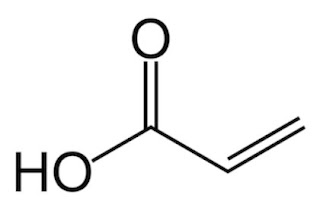Partnership headed by CENER unveils biorefinery concept developed for Navarre
Navarre (North of Spain) possesses a
solid infrastructure of technological centers and companies carrying out
projects in the fields of agriculture, renewable energies and industrial
biotechnologies. This is why a technological partnership worked during 2014 and
2015 to shape a biorefinery concept that integrates the knowledge gained in the
past by its members to achieve the maximum exploitation of the autochthonous herbaceous
biomass in an efficient and sustainable way.
Summary chart of the main
characteristics of the project:
Biorefinery in Navarre
Main objective: Development of the preliminary project of a biorefinery located in
Navarre.
Leader: CENER.
Workpackages:
·
WP1. Feedstocks.
·
WP2. Conversion processes.
·
WP3. Biorefinery concept design.
Funding: Government
of Navarre (50% co-financed by European Union FEDER funds).
Implementation period: 2014 – 2015.
|
Within this framework, a conference
took place on 10th February in ADItech
headquarters in order to disseminate the results achieved to the professionals
of the sectors related to the project subject. Moreover, a participatory
session was organized with round tables to analyze three key topics in the
biorefinery design and identify the interested industrial partners.
Figure 1. General view of the biochemical
module of the Second Generation Biofuel Centre of CENER (extracted from CENER
web page)
During the dissemination session, an
advanced assessment of the herbaceous biomass availability in Navarra from
crops (straw of different cereals, cauliflower and broccoli residues, alfalfa,
triticale and sorghum) and agroalimentary industries wastes (tomato, sweet
corn, cruciferous, pepper, cardoon and artichoke) was presented. Such
assessment considered the quantity, the seasonality and the location of the
feedstocks. With this data, an optimization study was carried out taking into
account economic, logistics and environmental aspects, and using a GIS-based
tool.
In this same session, the main
characteristics of the concept of advanced biorefinery developed in the project
were described. The following table shows a summary of those ones.
Table 1. Biorefinery
concept
|
|
Feedstocks
|
Cereal straw and tomato waste.
|
Products
|
Ethanol (18.500 ton/year),
furfural (14.000 ton/year) and lycopene (3.850 kg/year, 8% purity).
|
Technologies
|
1. Ethanol-furfural production
process:
- Pretreatment and acid hydrolysis
of the lignocellulosic feedstock: solid fraction (cellulose) and liquid
fraction (hemicellulose).
- The solid fraction is subjected
to enzymatic hydrolysis to break the cellulose bonds into glucanes
subsequently fermented to ethanol.
- The liquid fraction is transformed
intro furfural by a catalytic dehydration process.
2. Extraction process of lycopene from
tomato waste.
|
Along with the definition of the
concept, economic feasibility data from the preliminary project (investment, business
plan, scenarios and markets) were provided. The total budget for the facility would
rise to 80 M€.
The start-up of a plant with these
characteristics could suppose a strong economic and social boost for the
surrounding rural areas. Additionaly, Navarre would place a strategic position
in the incipient biorefining sector in Spain. The blog will follow with
interest the following advances of the project. I hope the biorefinery shall
find the support and the industrial partners to become a reality in a near
future.
NOTE: I would like to thank the staff of the
project in CENER for providing the technical information required to prepare
this post.




